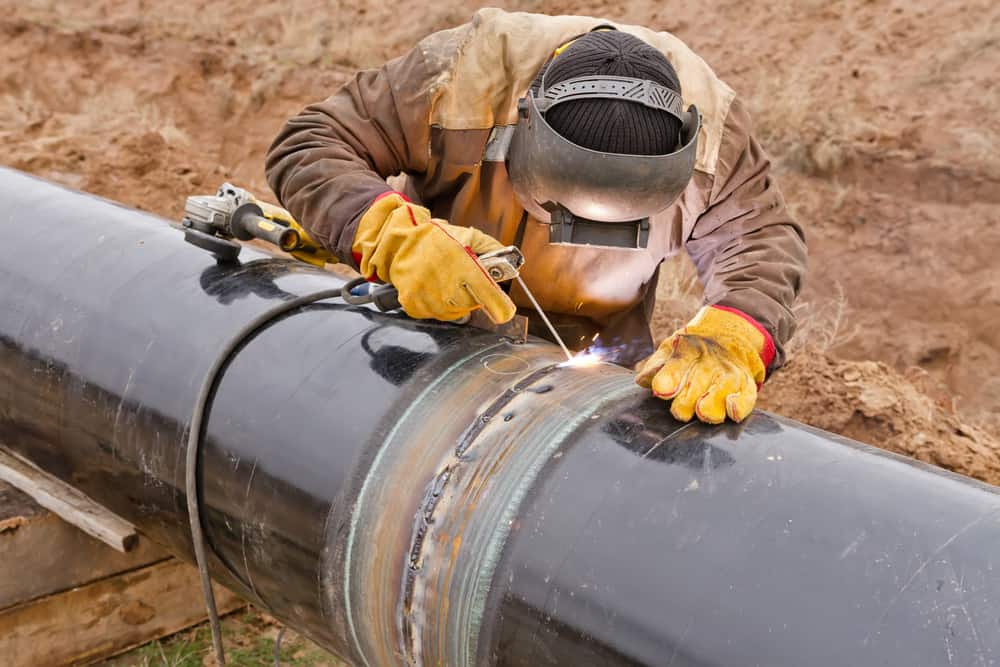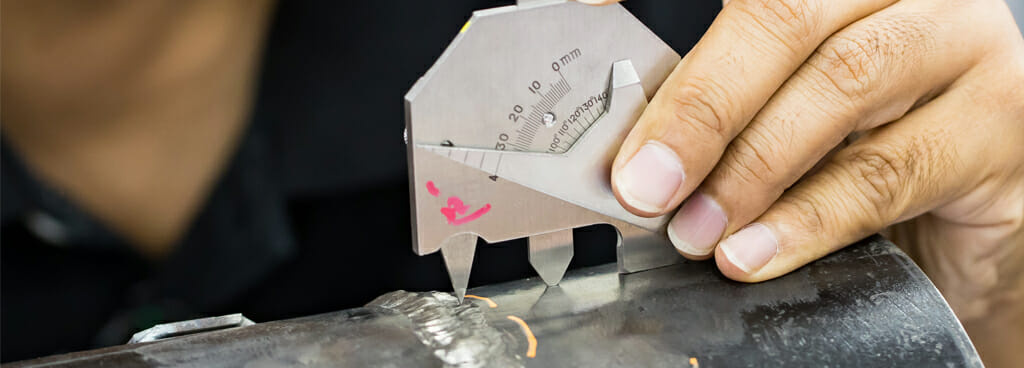Premier Houston Welding Inspection Solutions for Industrial Criteria
Premier Houston Welding Inspection Solutions for Industrial Criteria
Blog Article
A Comprehensive Guide to Recognizing Exactly How Welding Examination Works: Strategies, Specifications, and Ideal Practices for Top Quality Assurance in Metal Manufacture
Recognizing the intricacies of welding assessment is vital for preserving the integrity of metal manufacture. Numerous techniques, such as ultrasonic and aesthetic screening, play a pivotal role in determining possible flaws, while adherence to developed criteria makes certain compliance and durability. Furthermore, implementing ideal methods can significantly enhance high quality guarantee actions. The landscape of welding inspection is not without its difficulties. What complications emerge in the field, and exactly how can these be effectively alleviated? Exploring these elements reveals the deepness of this important technique.
Value of Welding Inspection
Although welding is a critical process in various sectors, its honesty directly impacts the security and performance of components and structures. Reliable welding assessment is necessary for identifying issues that can endanger the top quality and sturdiness of welded joints. This procedure makes certain adherence to developed standards and specifications, which are crucial for maintaining architectural honesty and functional reliability.
Welding evaluation offers several purposes, including validating that the welding procedure has actually been implemented correctly, assessing the quality of products used, and confirming that the completed product satisfies regulative and industry requirements (Houston Welding Inspection). Via extensive examination, prospective concerns such as porosity, splits, and insufficient blend can be detected early, mitigating and avoiding costly repair work safety dangers
In addition, consistent welding examinations foster self-confidence amongst stakeholders, including designers, customers, and regulative bodies, by demonstrating a commitment to quality assurance. The relevance of welding examination can not be overstated; it is indispensable not only for compliance with lawful needs however likewise for improving the overall efficiency of bonded structures. Ultimately, a durable welding inspection program is an aggressive procedure that safeguards against failings, making sure the longevity and integrity of welded components in their intended applications.
Typical Welding Assessment Techniques

Aesthetic inspection is the first line of protection, permitting inspectors to identify surface area flaws such as cracks, undercuts, or insufficient fusion. Radiographic testing uses X-rays or gamma rays to disclose internal defects, making it excellent for complicated welds. Ultrasonic testing utilizes high-frequency audio waves to discover subsurface defects, providing specific dimensions of weld honesty.
Magnetic fragment testing works for ferromagnetic products, highlighting surface area and near-surface gaps when fragments are used to a magnetic area. Conversely, dye penetrant screening uses a liquid color to disclose surface-breaking defects, ensuring that even the smallest problems are spotted.
Each method has its limitations and toughness, often necessitating a combination of methods for thorough analysis - Houston Welding Inspection. By using these inspection methods, quality control in metal fabrication is accomplished, making certain that bonded frameworks satisfy safety and security and performance criteria
Market Criteria for Welding


The American Welding Society (AWS) and the American National Criteria Institute (ANSI) are 2 noticeable companies that establish welding requirements. AWS D1.1, for instance, details the requirements for welding steel structures, while AWS D1.2 focuses on light weight aluminum. Worldwide, the ISO 3834 standard addresses quality needs for fusion welding, offering a structure appropriate across nationwide borders.

Finest Practices for Quality Control
Quality guarantee in welding is vital to attaining resilient and secure building and constructions. Developing a thorough quality management system (QMS) tailored to the certain welding job is important.
Regular training and qualification of welding workers are important for preserving a skilled workforce. Constant education on the most up to date welding navigate to these guys methods and innovations guarantees that assessors and welders are well-informed about present standards and practices.
Furthermore, carrying out pre-weld assessments to examine products and tools can stop defects before they happen. Houston Welding Inspection. Throughout the welding procedure, real-time monitoring and paperwork of welding criteria aid recognize incongruities immediately. Post-weld evaluations must involve complete evaluations making use of non-destructive testing (NDT) approaches to ensure the honesty of the welds
Furthermore, preserving clear interaction amongst group participants advertises a culture of high quality. Routine audits and reviews of the welding procedure aid recognize locations for improvement. By adhering to these best techniques, organizations can achieve ideal quality control, eventually resulting in enhanced security and efficiency in steel fabrication jobs.
Difficulties in Welding Inspection
Although welding inspection is critical for making certain architectural stability, it provides a variety of obstacles that moved here can make complex the evaluation procedure. One substantial obstacle is the variability in welding strategies and materials utilized, which can affect the consistency of weld high quality. Various welders may use varying approaches, bring about discrepancies that inspectors need to assess and recognize.
Another obstacle involves the detection of issues. Non-destructive testing (NDT) approaches, such as radiographic and ultrasonic screening, can be complicated and call for proficient specialists to analyze outcomes properly. False positives or negatives can occur, potentially leading to costly rework or endangered safety and security.
In addition, the visibility of ecological factors, such as temperature and moisture, can affect the integrity of welds and the effectiveness of assessment methods. Examiners need to likewise browse the regulatory landscape, making sure conformity with market requirements, which can vary by jurisdiction and application.
Final Thought
To conclude, welding assessment plays a vital role in ensuring the stability and safety and security of steel construction. Employing a range of inspection methods, sticking to well established market criteria, and applying efficient top quality my website management practices collectively boost the dependability of welded frameworks. In spite of the challenges encountered in the assessment process, a dedication to continuous renovation and adherence to best practices can substantially reinforce the top quality assurance framework, cultivating better self-confidence among stakeholders in the welding market.
Efficient welding examination is vital for recognizing problems that could endanger the top quality and durability of welded joints.Moreover, consistent welding assessments foster self-confidence amongst stakeholders, including engineers, clients, and regulative bodies, by demonstrating a dedication to top quality assurance.The American Welding Society (AWS) and the American National Criteria Institute (ANSI) are 2 noticeable companies that establish welding criteria. Throughout the welding process, real-time surveillance and documentation of welding criteria aid determine incongruities instantly. Regardless of the obstacles faced in the inspection process, a commitment to constant improvement and adherence to best practices can significantly reinforce the quality guarantee framework, promoting higher self-confidence among stakeholders in the welding sector.
Report this page